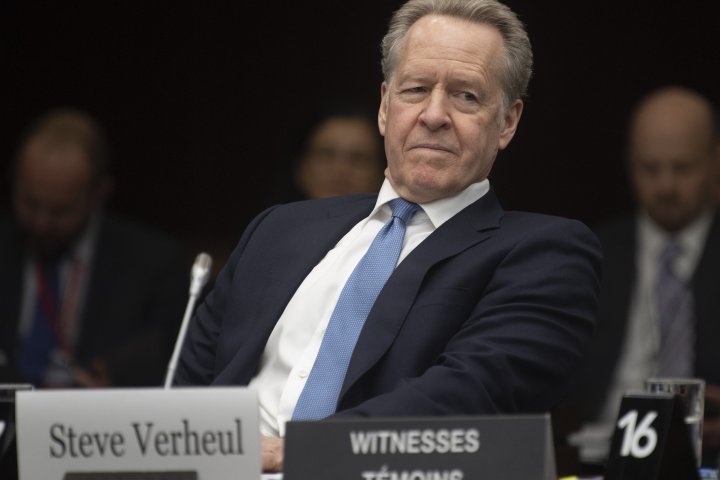[ad_1]

Donald Trump’s trade ambassador continued to keep Canada’s steel and aluminum industry in suspense Thursday as trade experts, labour bosses and business leaders considered how best to retaliate if the White House decides to impose fresh tariffs on metals from north of the border.
Steve Verheul tells a House of Commons committee hearing that under the terms of the May 2019 agreement on tariffs, Canada would be able to impose retaliatory levies against American aluminum, as well as any U.S. products containing it.
He did, however, provide some insight into why Section 232 tariffs, so named for the portion of U.S. law that permits them on the basis of a perceived threat to national security, have proven such a go-to lever for the Trump White House.
“Unquestionably, we did have a crisis,” Lighthizer said of the decision in 2018 to impose tariffs on steel and aluminum imports from around the world. He suggested the move was aimed primarily at China — a longtime trade foe that has been in American sights for using its outsized production capacity to depress prices and undermine U.S. producers.
He described himself as part of an administration determined to move the United States beyond its post-war mission to be a charitable principal architect of the new industrial order, a role in which he believes the country has lingered too long at the expense of American jobs and prosperity.
Imposing tariffs was “essential” in 2018, “particularly looking back at where we would be if we hadn’t done something on it,” Lighthizer said. “And when you take an action like that, you almost have to take it on a global basis.”
Tariffs are a blunt instrument that can also cause domestic costs to rise, he acknowledged — but drastic action, exacting a toll that Americans were willing to pay, was necessary to bring the U.S. back from an “extreme free-trade position” that came at the expense of American manufacturing jobs.
“There’s a balance there, and the balance had swung way too far into the level of save a penny here, save a penny there, moving half your manufacturing to China and the other half to Vietnam,” Lighthizer said.
“Are tariffs a perfect instrument? No. But is there another instrument? I don’t know of it … It’s a far more complicated thing than this simple comment that, ‘Well, it’s always paid by the consumers.’ I just don’t buy it.”
While Lighthizer spoke, Steve Verheul — Canada’s chief trade negotiator during the effort to replace NAFTA and an assistant deputy minister at Global Affairs Canada — was telling MPs on the House of Commons trade committee in Ottawa about the federal government’s retaliation options.
The U.S.-Mexico-Canada Agreement, which officially replaced NAFTA last week, won’t tie the government’s hands if that time comes, Verheul said. The separate cease-fire statement that saw the White House lift its original tariffs in May 2019 allows either country to impose retaliatory levies against incoming aluminum or any products that contain it, he said.
What actions Canada should take “really depends on what kind of action the U.S. takes,” Verheul told the committee.
[ad_2]
Source link
Dear readers, we really need your support to keep on serving you with authoritative, truthful, and juicy stories everyday. For your support, please reach out to the editor @gavelinternational66@gmail.com

